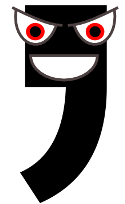the comma
 The comma is important. It is not used as much as it should be in written English, and this makes comprehension of sentences a whole lot more difficult, especially if English is not your native language.
The comma is important. It is not used as much as it should be in written English, and this makes comprehension of sentences a whole lot more difficult, especially if English is not your native language.
comma
noun
the sign (,), a mark of punctuation used for indicating a division in a sentence, as in setting off a word, phrase, or clause, especially when such a division is accompanied by a slight pause or is to be noted in order to give order to the sequential elements of the sentence. It is also used to separate items in a list, to mark off thousands in numerals, to separate types or levels of information in bibliographic and other data, and, in Europe, as a decimal point. Dictionary.com
“I like commas. I detest semi-colons – I don’t think they belong in a story. And I gave up quotation marks long ago. I found I didn’t need them, they were fly-specks on the page.” E. L. Doctorow
“Life is a series of commas, not periods.” Matthew McConaughey
examples of comma usage
The comma is used to separate independent clauses in a sentence.
“I wanted to swim, but the water was icy cold.”
You can use a comma after an introductory clause and before the main clause.
“If I can wear a wet-suit, I will go into the water.”
Some words called introductory words, like, yes, no, well, should be followed by a comma.
“Yes, I have seen that movie.”
Commas must be used to section off an unrelated or side clause from the main sentence. The sentence reads correctly without the side clause.
“The garden, which had been neglected, was an acre in size.”
Use commas to separate geographical names, parts of dates (6th February, 1998 – note that month and day are not separated by a comma), addresses (345 Brooks Avenue, Jamestown, CA 98787. Here, street numbers and names are not separated by a comma)
Use commas so that you make your meaning clear. We have all seen that classic of comma ommision “Lets eat Grandma.” which should have been “Let’s eat, Grandma.”
What is the Oxford Comma?
It is used for lists. It is also known as a Serial Comma or a Harvard Comma, the Oxford comma is found more in American English than British English. All items in a list of three or more items are separated by a comma such as
“I wore red, white, and blue.”
There is a comma after white. Many grammarians, especially British English ones, think that this comma is unnecessary.
Commas are used to make meanings more clear. The comma is used in everyday language, spoken and written. Where you want to indicate a pause, a slight break in the sentence, in order to convey the correct meaning, you use a comma.




















